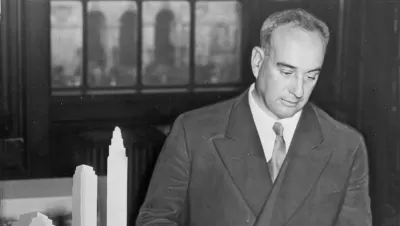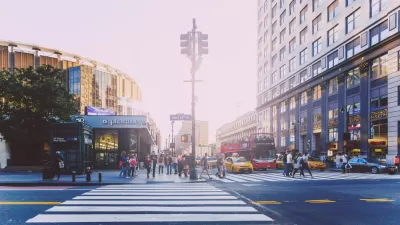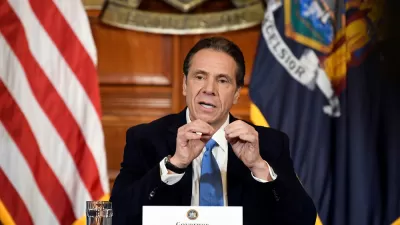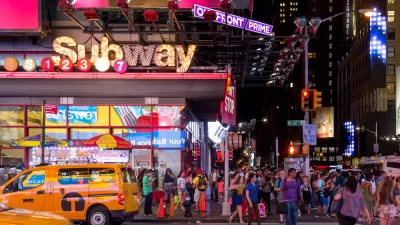In a deep dive into the sad state of the nation's busiest transit hub, Marc J. Dunkelman raises a dispiriting question. In their zeal to ward off future Robert Moseses, have progressives crippled government's power to carry out its job?

"Penn Station is the second most heavily trafficked transit hub in the world, trailing only Tokyo's Shinjuku Station," Marc J. Dunkelman writes. "For more than a generation, New York's most important gateway has been a grimy relic." Determining exactly why that is led Dunkelman on a lengthy investigation into how the politics of infrastructure have evolved in New York City.
His conclusion: Penn Station has languished because political progressives fear the power Robert Moses once wielded and have defanged it over time, tying their own hands along the way. "No one has the leverage to fix [Penn Station]. The sad state of America's most important train station stems more from a failure of power than a failure of leadership. And shockingly enough, that's not by mistake—it's by design."
Dunkelman argues that the publication of Robert Caro's seminal work on Moses, The Power Broker: Robert Moses and the Fall of New York, marked the starting point for an anti-power strain on the left that worked in concert with the anti-government right, in reality if not in rhetoric, to undermine public sector effectiveness.
He writes, "Even as progressives have championed Big Government, they've worked tirelessly to put new checks on its power—to pull it away from imperious technocrats who might use government to bulldoze hapless communities. And it's that impulse to protect the powerless from the abuse of public power that is most responsible for the morass that is Penn Station."
Dunkelman's narrative traces how increasingly unambitious plans have been put forward to remake the station, only to run up against a dynamic in which "where so many players can exercise a veto, it's nearly impossible to move a project forward." He goes on, "The Trump era may not be the moment to extol the virtues of unchecked executive power. But Penn Station's story suggests that, for those hoping to achieve traditionally progressive aims, America's cultural aversion to power has gone too far."
FULL STORY: This Is Why Your Holiday Travel Is Awful

Study: Maui’s Plan to Convert Vacation Rentals to Long-Term Housing Could Cause Nearly $1 Billion Economic Loss
The plan would reduce visitor accommodation by 25,% resulting in 1,900 jobs lost.

North Texas Transit Leaders Tout Benefits of TOD for Growing Region
At a summit focused on transit-oriented development, policymakers discussed how North Texas’ expanded light rail system can serve as a tool for economic growth.

Why Should We Subsidize Public Transportation?
Many public transit agencies face financial stress due to rising costs, declining fare revenue, and declining subsidies. Transit advocates must provide a strong business case for increasing public transit funding.

How to Make US Trains Faster
Changes to boarding platforms and a switch to electric trains could improve U.S. passenger rail service without the added cost of high-speed rail.

Columbia’s Revitalized ‘Loop’ Is a Hub for Local Entrepreneurs
A focus on small businesses is helping a commercial corridor in Columbia, Missouri thrive.

Invasive Insect Threatens Minnesota’s Ash Forests
The Emerald Ash Borer is a rapidly spreading invasive pest threatening Minnesota’s ash trees, and homeowners are encouraged to plant diverse replacement species, avoid moving ash firewood, and monitor for signs of infestation.
Urban Design for Planners 1: Software Tools
This six-course series explores essential urban design concepts using open source software and equips planners with the tools they need to participate fully in the urban design process.
Planning for Universal Design
Learn the tools for implementing Universal Design in planning regulations.
City of Santa Clarita
Ascent Environmental
Institute for Housing and Urban Development Studies (IHS)
City of Grandview
Harvard GSD Executive Education
Toledo-Lucas County Plan Commissions
Salt Lake City
NYU Wagner Graduate School of Public Service





























